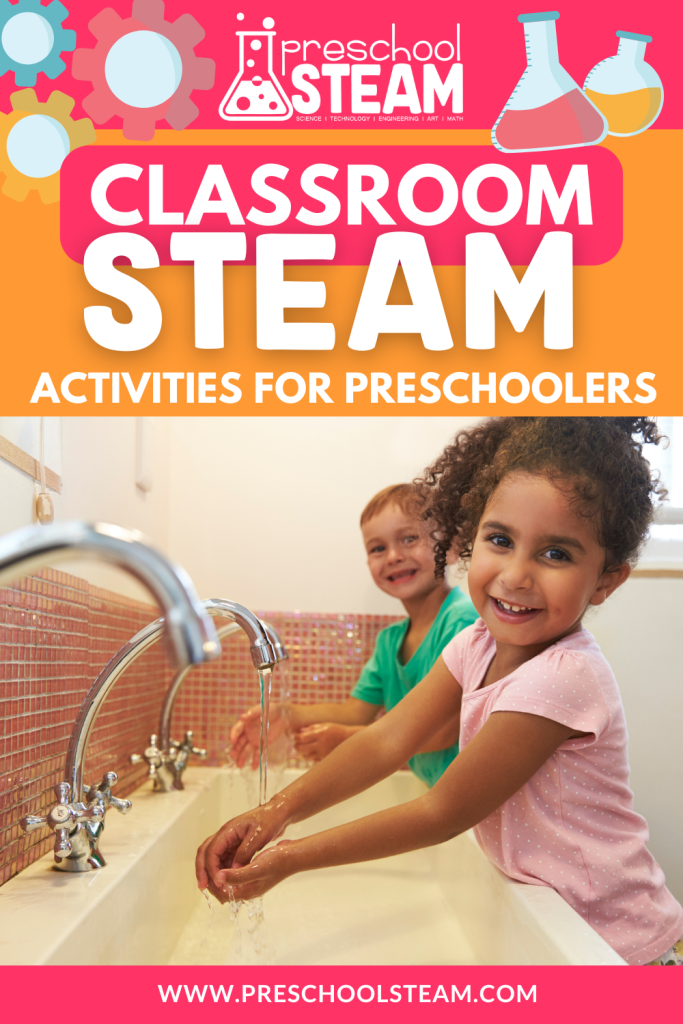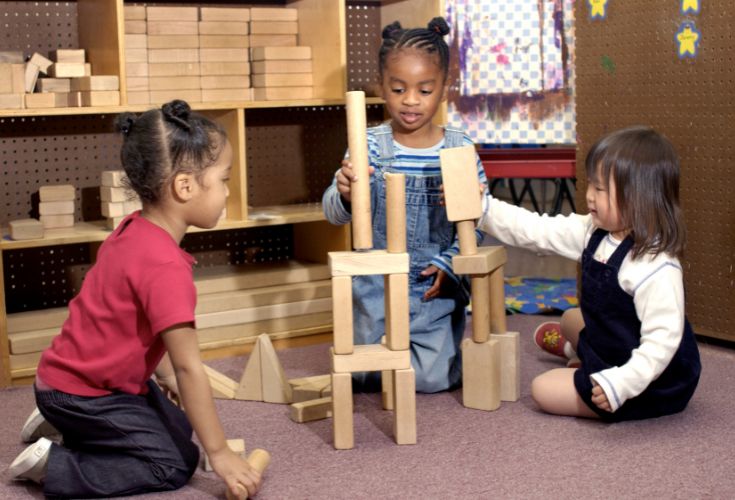STEAM learning doesn’t have to be a special event or a planned activity. Some of the most valuable learning opportunities happen during everyday classroom routines. Whether it’s snack time, cleanup, or transitions between activities, these moments are filled with chances to spark curiosity, encourage problem-solving, and build teamwork.
In this post, we’ll explore how to turn simple routines into powerful STEAM experiences, helping preschoolers learn through play while keeping your day running smoothly.

STEAM in Snack Time
Snack time is more than a chance to refuel—it’s a built-in opportunity for hands-on learning.
- Patterns and Sorting: Use snacks like crackers, fruit slices, or cereal to create patterns. Challenge children to replicate or extend the patterns, or sort the snacks by size, shape, or color.
- Math with Measuring: Have children measure out portions using cups or spoons. Ask questions like, “How many apple slices do we need if everyone gets two?”
- Science with Textures: Encourage children to explore the texture of different snacks. What’s crunchy? What’s soft? What happens if we leave crackers in water for a minute?
By weaving STEAM into snack time, you can reinforce important concepts while keeping children engaged and focused.
Cleanup as a STEAM Challenge
Cleanup time is often overlooked as a learning moment, but it’s a perfect opportunity to explore engineering, physics, and problem-solving.
- Experiment with Water Flow: During sink time, let children experiment with the water’s movement. Use cups, spoons, or small funnels to see how water flows and changes direction.
- Build Sorting Skills: Create categories for items like blocks, crayons, or markers. Sorting by color, shape, or size helps children develop classification skills and organizational habits.
- Spatial Awareness with Stacking: Challenge children to stack toys or blocks to fit neatly on shelves. Ask, “What happens if we turn the block this way?” or “How can we make all the toys fit?”
Cleanup becomes more than a task—it transforms into an engaging exploration of STEAM concepts.
STEAM in Transitions
Transitions can be chaotic, but with a STEAM lens, they’re full of potential.
- Design a Schedule Board: Collaborate with children to create a schedule board for the day. Use shapes, colors, and images to represent different activities, building visual and spatial awareness.
- Movement Patterns: Turn lining up into a pattern game. Call out a sequence like “clap, stomp, spin” and have children repeat it as they move to the next activity.
- Counting Down: Use transitions as a chance to practice counting skills. For example, “We’ll clean up in five, four, three…” builds math readiness while managing time effectively.
By incorporating STEAM into transitions, you can maintain structure while keeping children’s minds actively engaged.
Building Curiosity Through Observation
Every routine becomes a learning moment when you observe and ask intentional questions.
- Observation: Watch how children approach tasks. Are they experimenting with different ways to pour water? Are they using creative strategies to stack blocks?
- Open-Ended Questions: Encourage deeper thinking by asking questions like:
- “What happens if we do it this way?”
- “Why do you think that worked?”
- “How can we solve this problem together?”
These questions guide children to reflect on their actions and discover new solutions, fostering curiosity and critical thinking.
Takeaway: Learning is Everywhere
By turning everyday routines into STEAM opportunities, you make learning a natural and continuous part of your classroom. Snack time, cleanup, and transitions become moments for creativity, collaboration, and discovery.
The best part? These activities require no extra materials or preparation—they simply require a shift in perspective. So, as you go about your day, look for the hidden learning moments in the ordinary and watch your preschoolers grow through play.

Leave a Reply